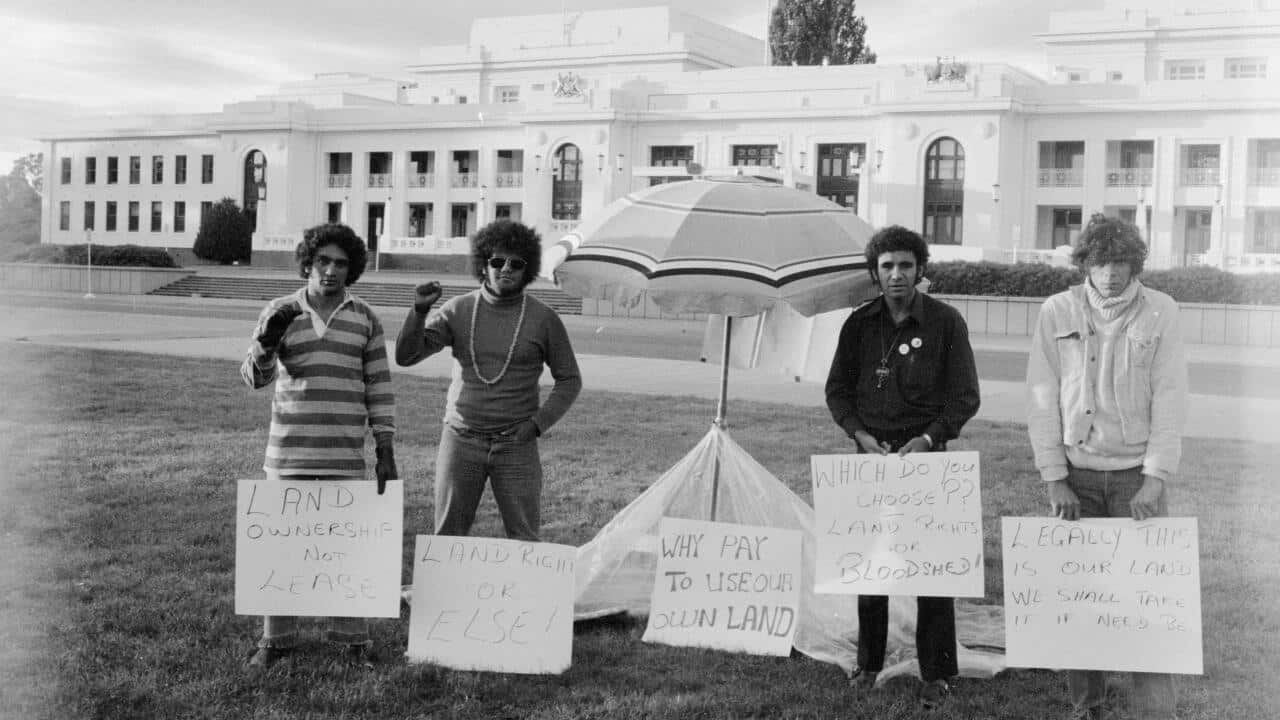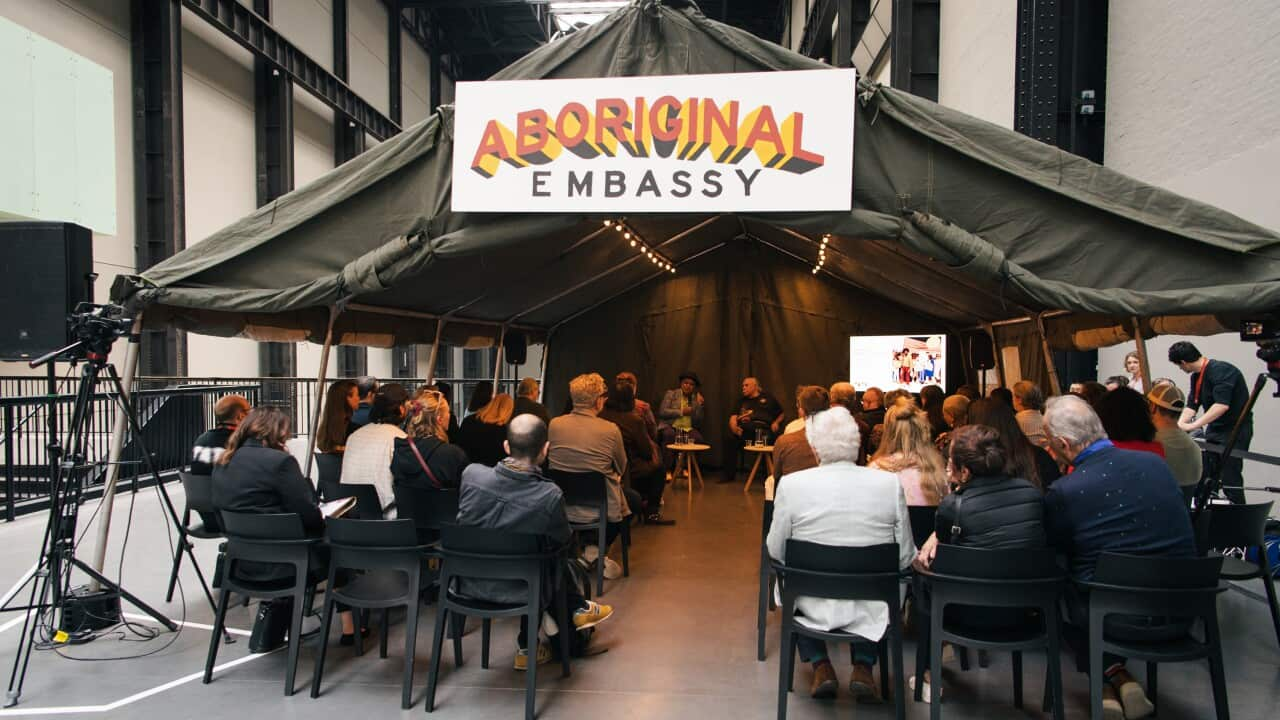Warning: this article contains the names and images of First Nations people who have died.
On January 26, 1972, four Aboriginal men planted a beach umbrella on the lawns of Parliament House in Canberra, creating the Aboriginal Embassy.
More than fifty years on and despite police raids, court action and being burnt down, the Aboriginal Tent Embassy still stands as a powerful reminder of Blak sovereignty.
Those four men, Billy Craigie, Bertie Williams, Ghillar Michael Anderson and Tony Coorey met in the activist stronghold of Redfern.
Only Ghillar is still alive.
Writing for NITV on the of the Tent Embassy's establishment, Ghillar said the founders were motivated by Liberal Prime Minister Billy McMahon's approach to Aboriginal land rights.
McMahon had announced the government was prepared to "lease" land to Aboriginal people in the Northern Territory – if they could demonstrate a social and economic use for the land and excluding mineral and forestry rights.
READ MORE

Tent Embassy
"That turned my stomach upside down," Ghillar said.
"There were terrible things being said in Parliament at the time, so we were prepared for something bad, but after we read that in the paper, it set off the fire within us."
Land rights
- Complete rights to the Northern Territory as a state within Australia and the installation of a primarily Aboriginal State Parliament, with title and mining rights to the land.
- Ownership and mining rights of all other Aboriginal reserve lands in Australia.
- The preservation of all sacred sites in Australia.
- Ownership of areas in major cities, including the mining rights.
- Compensation for lands that were not able to be returned, starting with $6 billion dollars (almost $76 billion in today's money) and including a percentage of the gross national income every year.
While Opposition Leader Gough Whitlam visited the Embassy to discuss the plan, the McMahon Government went on the attack, hurriedly drafting new legislation to make camping on unleased land in the ACT illegal.
Support for the Embassy grew quickly, with more First Nations peoples, students and activists joining, and by April 1972 at least six tents had been set up, even receiving international recognition, including from Canada and Russia.
On July 20, 1972, the Australian Government sent 150 police in to dismantle the Embassy.
There was a violent clash, with eight arrests, dozens injured and the tents torn down.
The violent eviction was followed by large-scale protests and just days later the Embassy was re-erected - only to again be torn down by police, in a pattern repeated several times over the next couple of months until September, when the ACT Supreme Court ruled in favour of the activists.
The embassy stood until 1976, when it was voluntarily dismantled following negotiations in response to the passage of the .
The Embassy was formed and reformed on different sites around Canberra over the years until in 1992, on the 20th anniversary of its establishment, First Nations activists brought it back to its original home on the lawns of (now) Old Parliament House.
In 1995, the Tent Embassy was listed on the Register of the National Estate by the Australian Heritage Commission - but this listing didn't guarantee safety.
A few years later Howard Coalition Government Minister Wilson Tuckey had the Embassy in his sights – repeatedly calling it an "eyesore" – and sent armed riot police in several times in 2003.
That same year the Embassy was targeted by arson and archival material was destroyed by fire.
But despite numerous attempts to shut it down, move on the protesters and criticism by conservative politicians, the Embassy has endured, the sacred fire still burns and in 2022 celebrated 50 years with a big gathering.
These days the is run by a working group committee, with rules for visitors following Aboriginal protocols.














